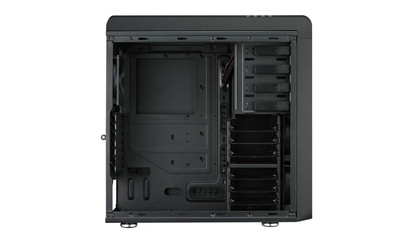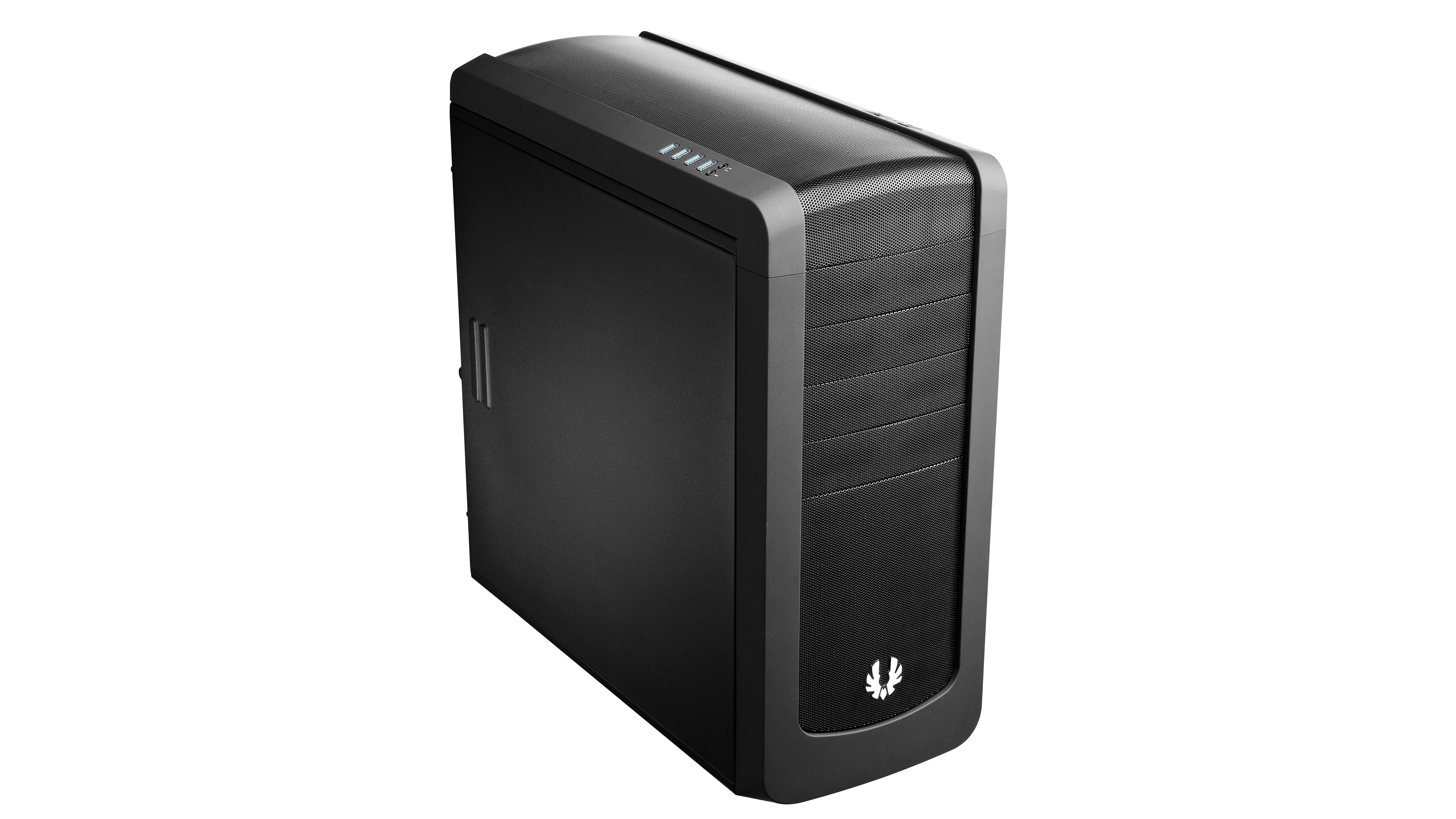TechRadar Verdict
Pros
- +
Very good price
- +
Good air flow
- +
Quiet
Cons
- -
Can get cramped
- -
Won't win any design awards
Why you can trust TechRadar
There are some cases, such as the CM Storm Enforcer, that set out to make as big an impression as possible, with windows and lights to show off the premium kit you've crammed inside it. Others take a more subtle approach, like this BitFenix Raider.
It's a pretty plain - though not ugly - chassis.
This isn't a box that's going to dominate at LAN parties and leave your rivals worshipping its monolithic majesty like the apes in 2001: A Space Odyssey.
Instead this is a rather unassuming ATX mid tower that concentrates on features and functionality - rather than being distracted with aesthetic extravagance. Although the design of the Raider is straightforward, it still looks pretty good.
Most of the front and top of the case is made out of steel mesh, which allows for excellent airflow throughout.
At the top you'll find four USB 3.0 ports, as well as headphone and microphone sockets. The four USB 3.0 sockets are a welcome touch and are connected internally via two headers.
If the motherboard you install inside the BitFenix Raider doesn't have enough USB 3.0 headers available, a USB 2.0 adaptor is also included - which shows impressive forethought.
Vital stats
Format
- ATX Mid Tower
Motherboard support
- Mini-ITX, mATX, ATX
Fans
- 2x 120mm front, 1x 120mm rear
Drive bays
- 4x 5.25in, 6x 3.5in, 7x 2.5in
Front panel
- 4x USB 3.0, mic, headphone, fan control

The top of the case is also home to the power and rest buttons, two rather discreet LEDs and a fan control slider that can control up to five fans. It's a nice touch that the control, along with the I/O ports, are at the top, making it easy to get to if you keep the tower below a desk.
The case comes with three fans as standard, but there's space for adding another 120mm fan to the bottom and a 200mm fan to the top of the case. You also have the option of replacing the two front fans with a single 200m unit as well.
Being a mid-sized case there's a bit of compromise when it comes to how much space you've got to tinker with, but the height does allow for plenty of expansion options, with spaces for 10 drive bays and seven PCI slots down the back.
The tool-less design makes installing drives a snap, and it's nice to have a front panel that we were able to remove without worrying that it will break.
Securing the motherboard was slightly more fiddly, as with a PSU installed at the bottom of the case, room soon becomes a premium and we had to insert the motherboard at an angle.
While the BitFenix Raider is tall enough to hold plenty of components, its length means that things get cramped pretty fast. While long graphics cards can be accommodated, the case holding the hard drive bays makes attaching SATA cables difficult if the port on your motherboard come out at right-angles.
BitFenix has foreseen this problem though and has made one of the middle drive bay's walls removeable.
That will stop you from being able to store drives in it, reducing you to only three spaces, but it means even the vast AMD Radeon HD 6990 could sit comfortably inside without jamming up the SATA connections too.
After installation, the case is very quiet, even with the three fans going and the fan control on max.
We liked
When everything is installed, the case is very quiet - so much so that it was a shame to install a DVD drive, as the whirring from that seemed stupidly loud in comparison.
The I/O and fan controls at the top of the chassis is another nice touch.
The price is also very attractive.
We disliked
For all the ease of installing drives, the limited depth of the case did cause a few annoyances further into the installation, although depending on the motherboard and size of the graphics card and other components you use, you might not encounter the same frustrations.
Verdict
The BitFenix Raider is a competent case with a great price, but if you want more room to tinker, look elsewhere.
Follow TechRadar Reviews on Twitter: http://twitter.com/techradarreview

Matt is TechRadar's Managing Editor for Core Tech, looking after computing and mobile technology. Having written for a number of publications such as PC Plus, PC Format, T3 and Linux Format, there's no aspect of technology that Matt isn't passionate about, especially computing and PC gaming. He’s personally reviewed and used most of the laptops in our best laptops guide - and since joining TechRadar in 2014, he's reviewed over 250 laptops and computing accessories personally.
